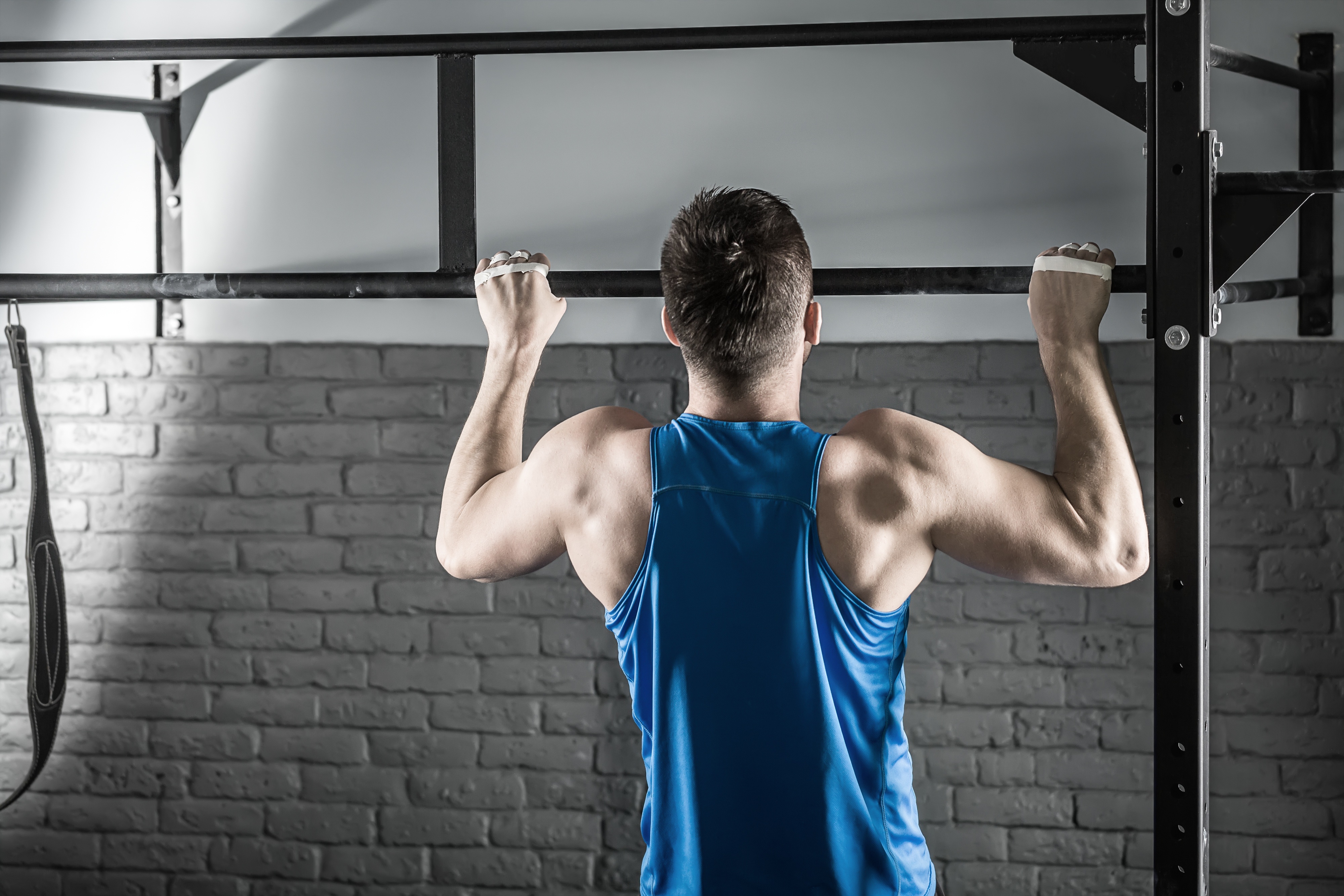Pull-up Progression to Improve Strength to Weight Ratio

Strength to weight ratio is an important concept for all athletes to keep in mind. In sports that place high value on both endurance and speed, such as swimming and running, the strength to bodyweight ratio is a good measure of overall athletic efficiency. In gymnastics, strength to bodyweight ratio is incredibly critical to an athletes ability to suspend themselves throughout various positions. In general, a high strength to weight ratio is favorable. To develop strength without gaining excessive body mass, bodyweight exercises are the way to go about doing so. These movements will increase an athlete's functional strength: strength that utilizes the whole body rather than isolating parts of it. Most strength programs will have a combination of bodyweight and regular weighted exercises to achieve various strength goals. To delve into this topic further, one extremely valuable bodyweight exercise: the pull-up.
Pull-ups: Purpose, Benefits, and Technique
Pull-ups are an excellent way to measure baseline strength to bodyweight ratio (there are numerical ways of calculating this, but for the purposes of training, athletes can assess their strength using their pull-up capability). This exercise requires a complex integration of various muscle groups to lift the entire body. It is also a dynamic exercise: like many bodyweight exercises, athletes can vary the position of their grip, add a weighted belt for higher resistance or a stretch band for lower resistance, and use different types of equipment (ropes, still rings, bars, etc). Pull-ups develop the strength athletes need in order to pull their own bodyweight, without adding unnecessary muscle mass. The exercise also develops greater neuromuscular coordination than isolated movements do (e.g. lat pull-downs on a machine).
The technical components of pull-ups and other bodyweight exercises are just as important to master as they are for lifting weights. A common mistake made when doing pull-ups is letting oneself hang fully extended from the bar, with both arms fully stretched out before pulling. This puts stress on the small tendons and ligaments in the shoulders and arms, instead of the targeted muscles groups. When athletes hang from the bar, they should keep their shoulders down, away from the ears, and closer in their sockets. Beginners often neglect their lats, and try to pull up using only their arms, using the lats will help the overall function of the exercise. The lats should be the first muscles to engage, as they contribute a significant force to the pull-up.
A Complete Strength Program
It is possible to reach a point where pull-ups and push-ups are not sufficiently challenging for the athlete anymore. To continue to progress, athletes can always add resistance to their bodyweight exercises. A combination of weightlifting and bodyweight exercises is necessary to create a complete strength program that also develops the power and explosiveness many sports demand.
Pull-up Progression
Below, the videos will act as a guide through a series of pull-up variations. First, in the sequence is the assisted pull-up, great for athletes who are just starting their training or athletes who cannot quite do a bodyweight pull-up yet. Here, athletes can also use a partner to assist with this exercise. Second in the series is the bodyweight pull-up. Mastering this movement is vital to progressing to more advanced variations of the pull-up. The towel grip pull-up will give athletes the same benefits as a bodyweight pull-up, plus it will significantly increase forearm strength. Having strong forearms is extremely useful in many sports and to be able to handle heavier dumbbell and barbell loads while strength training. Next in the progression, is the lateral pull-up. This movement isolates the side of the body by, adding extra strength and stability in the targeted shoulder, bicep, tricep, and core. Last in the progression, is the weighted pull-up. This exercise is extremely difficult, so athletes should only progress to it when they are able to complete 12-15 pull-up reps with relative ease. Adding weight in this case will make the pull-up a strength exercise, whereas adding more reps will make it a muscular endurance exercise.
Assisted Pull-up:
Bodyweight Pull-up:
Towel-Grip Pull-up:
Lateral Pull-up:
Weighted Pull-up:
Recap
Pull-ups are a great way for athletes to test their weight to strength ratio. Starting with a baseline test, athletes can track their progress, as their weight to strength ratio increases. Utilizing the correct muscle groups is important in this pull-up progression, especially engaging the lats. The pull-up progression is a process and takes time, athletes need to be patient with the process and be able to track their increased strength down the road.
To learn more about why strength is important in athletics read this article about strength and conditioning for swimmers, and this article about how to increase strength and power.
Related Posts

The Best Bench Press Variation You’re...
This post is part of our Coaches Corner series with Taylor Rimmer. Taylor is NSCA-CPT, StrongFirst...

Does Powerlifting Harm Heart Health?
A recent study has discovered that a 12-week supervised strength training program (SSTP) may result...
-1.png)
Barefoot Running: Is It For You? |...
Run Free: Consider Less Cushion
Updated October 2020:
With more athletes looking for ways to...



